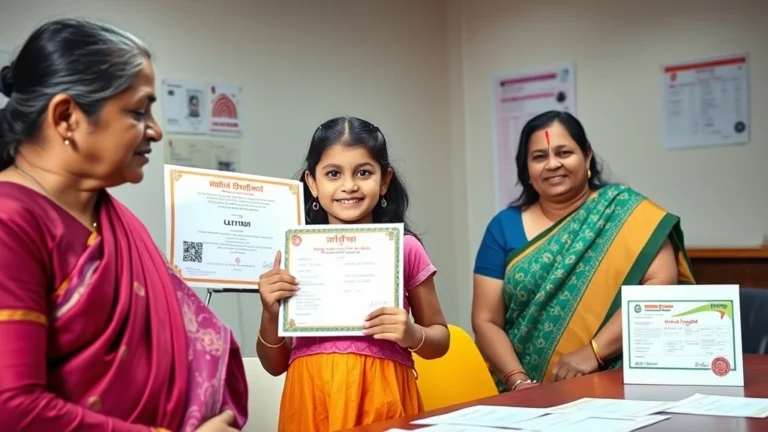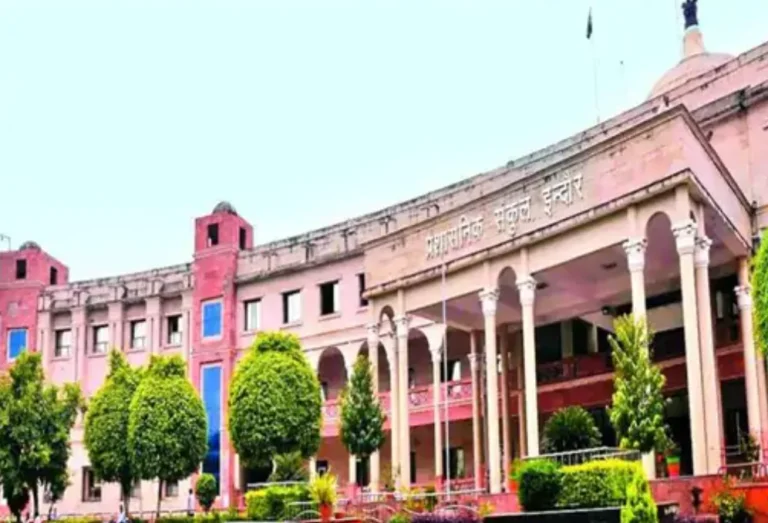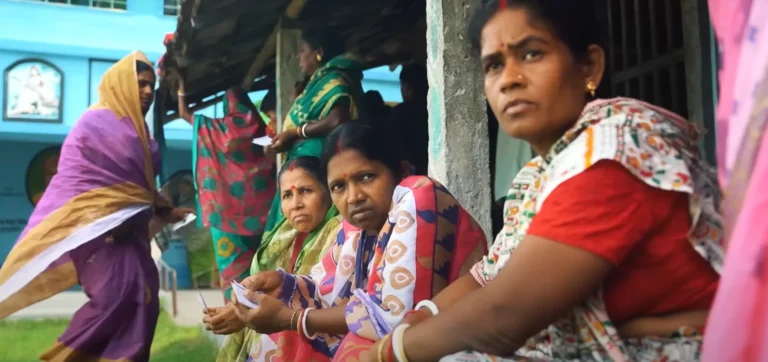Samagra ID AI Survey 2025
Samagra ID AI Survey 2025. The Samagra ID is a unique family and individual identification number introduced by the Madhya Pradesh Government to streamline access to welfare schemes, pensions, ration cards, and scholarships. Since its launch, it has played a critical role in ensuring that social benefits reach the right citizens without duplication or errors.
Now, the government is taking a transformative step forward. Starting 25 August 2025, an AI-powered survey will be launched to identify and rectify errors in existing Samagra ID records. This initiative will use advanced technology to detect duplicate entries, update outdated details, and correct mistakes in family databases.
This matters to every citizen because a small error in the Samagra ID can block access to essential services. With the help of artificial intelligence, the government aims to make the system more transparent, reliable, and citizen-friendly—ensuring that no family is left out of welfare benefits.
What is Samagra ID AI Survey 2025?
The Samagra ID system was first introduced in 2012 by the Madhya Pradesh Government as a way to create a unified family and individual identity database. Each family receives a unique Samagra Family ID, while every member has an individual Samagra ID. This system allows citizens to access pensions, ration benefits, scholarships, and other welfare schemes without confusion or duplication.
Until now, updates and corrections to these records were handled through manual surveys or by visiting local government offices. However, manual surveys often led to errors such as duplicate entries, outdated addresses, or missing information—causing delays in welfare distribution.
To overcome these challenges, the government has announced an AI-powered Samagra ID survey, officially starting on 25 August 2025. Unlike traditional surveys, this new system will use artificial intelligence algorithms to automatically detect mistakes, identify duplicate records, and validate information across databases like Aadhaar, ration cards, and pension schemes.
The purpose of this AI survey is clear:
- Accuracy – ensure that every family record is up to date.
- Transparency – reduce errors and fraud in welfare schemes.
- Efficiency – minimize the time citizens spend correcting their records.
When and Where Will the Survey Start?
The Samagra ID AI Survey is officially scheduled to begin on 25 August 2025. According to government sources, the rollout will follow a phased approach to ensure smooth implementation across Madhya Pradesh.
The first city to launch the pilot project is Indore, where the Indore Municipal Corporation (IMC) will test the AI-powered system for accuracy and efficiency. Indore was chosen because it is one of the state’s largest urban centers, offering both scale and diverse data challenges that make it an ideal testing ground.
After the pilot phase in Indore, the survey will gradually expand to other districts, towns, and rural wards across Madhya Pradesh. This step-by-step rollout is designed to identify and resolve potential issues early, ensuring that by the time the survey covers the entire state, the process is smooth, citizen-friendly, and effective.
By starting in Indore and expanding outward, the government aims to cover all families and individuals in Madhya Pradesh, ensuring that every Samagra ID record is accurate, updated, and ready for integration with welfare programs.
How Will AI Identify and Rectify Records?
The core strength of the Samagra ID AI Survey lies in its use of artificial intelligence algorithms to detect and fix errors in citizen records. Unlike manual surveys where human error often created problems, AI can analyze massive datasets with speed and precision.
- Duplicate Detection & Missing Information
- AI tools will scan through millions of records to spot duplicate entries—such as the same individual being listed under two different family IDs.
- The system will also highlight incomplete or missing data, for example, if a family record has no date of birth or an incorrect spelling of names.
- Integration with Key Databases
- To validate information, the AI system will cross-check Samagra ID records with other government databases like Aadhaar, ration cards, and pension schemes.
- This cross-verification ensures that details such as addresses, family relationships, and age are consistent across platforms.
- Real-World Examples of Corrections
- Suppose a citizen’s date of birth is wrongly entered in the Samagra system. AI can automatically match it with Aadhaar records and suggest a correction.
- If two Samagra Family IDs are mistakenly created for the same household, AI will detect the duplication and merge them into a single valid record.
By combining pattern recognition, data matching, and error detection, AI ensures that Samagra ID records become more reliable than ever before. This means fewer rejected applications, faster access to welfare schemes, and greater transparency in the system.

Benefits of Samagra ID AI Survey 2025
The introduction of an AI-driven survey for Samagra IDs is expected to bring significant advantages for both citizens and the government. By reducing human errors and streamlining records, the system ensures that social welfare benefits reach the right people at the right time.
- For Citizens
- Smoother access to benefits: With accurate records, citizens will face fewer hurdles in receiving pensions, ration cards, scholarships, and other welfare entitlements.
- Faster corrections: Errors in names, dates of birth, or family links can be identified and fixed more quickly, saving families from long waits at government offices.
- For the Government
- Accurate data collection: AI ensures that beneficiary records are clean, updated, and reliable, allowing the government to plan and allocate resources more effectively.
- Better policy decisions: Reliable data helps in creating targeted welfare schemes, improving efficiency and reducing waste.
- For the System as a Whole
- Transparency and trust: The use of AI minimizes manipulation, ensuring that only eligible families benefit.
- Reduced fraud and fake entries: Duplicate records or ghost beneficiaries can be automatically detected and removed, preventing misuse of government resources.

Challenges and Concerns
While the Samagra ID AI Survey promises greater accuracy and efficiency, it also raises important questions and concerns that need to be addressed.
- Data Privacy and Security
- Large-scale integration of Samagra IDs with Aadhaar, ration cards, and pension data means sensitive personal information will be handled by AI systems.
- Citizens may worry about how their data is stored, who has access to it, and whether it could be misused or leaked. Ensuring strong data protection policies and encryption standards is critical.
- Risk of Misidentification
- AI systems rely on algorithms and existing data. If the source data is flawed or incomplete, there’s a chance the AI might incorrectly flag genuine citizens as duplicates or errors.
- Such mistakes could temporarily block deserving families from accessing welfare benefits until corrections are made.
- Delays in Rural and Remote Areas
- While cities like Indore are ready for an AI-driven system, rural and remote areas may face challenges such as poor internet connectivity, lack of digital awareness, or limited infrastructure.
- These issues could delay the survey rollout, creating a digital divide between urban and rural citizens.
- Citizen Awareness Gap
- Another major concern is the awareness gap among citizens. Many people, especially in villages, may not fully understand the purpose of the AI survey, the benefits of Samagra ID, or the process to correct errors if they occur.
- Without proper guidance, confusion and mistrust may spread, reducing public participation and slowing down the effectiveness of the program.

Step-by-Step Guide for Citizens
The Madhya Pradesh government has announced clear instructions to help citizens prepare for the upcoming AI-powered Samagra ID survey. To ensure a smooth process, follow these steps:
- Prepare Necessary Documents
Keep the following documents ready before the survey team visits your area:
- Aadhaar Card (for all family members)
- Ration Card
- Pension-related documents (if applicable)
- Birth/Death certificates (for updating family details)
- Residence proof
2. Check or Update Your Samagra ID
After the AI survey is completed, citizens should verify their updated records on the official Samagra Portal.
- Visit samagra.gov.in
- Enter your Family ID or Member ID
- Cross-check all details (names, birth dates, relationships)
- Request corrections immediately if errors are found
3. Use Helpline for Support
If you face difficulties, the government has set up dedicated support channels:
- Samagra Helpline Number: 0755-2558390
- Portal Support: samagra.gov.in
Expert Insights
To better understand the scope of the Samagra ID AI Survey, it is important to look at expert opinions and credible sources.
1. Government Perspective:
According to officials from the Indore Municipal Corporation, the AI-driven survey will help streamline welfare delivery by reducing duplicate and inactive entries in the Samagra database. They emphasized that the project is designed to make the system “faster, transparent, and citizen-friendly.”
2. Credible News Source:
A report by the Free Press Journal highlighted that the AI survey in Indore is part of a larger initiative by the Madhya Pradesh government to bring accuracy in beneficiary identification. Similarly, Dainik Bhaskar reported that starting from August 25, 2025, survey teams will begin household verification across all wards of Indore.
3. Citizen Experience:
Local residents have expressed mixed reactions. While some families welcomed the initiative, hoping it would make welfare benefits more reliable, others voiced concerns about potential errors. One Indore resident explained that in the past, incorrect data entries led to the suspension of his mother’s pension, and he hopes the AI system will finally prevent such mistakes.
FAQs on Samagra ID AI Survey
Conclusion
The AI-driven Samagra ID survey marks a major step toward transparent and efficient governance in Madhya Pradesh. By ensuring that family and member records are accurate, the government can deliver welfare schemes more effectively, reduce duplication, and minimize errors in beneficiary identification.
This survey is not just about correcting IDs, it’s about building a smarter welfare system for MP citizens—one that is future-ready, data-driven, and citizen-focused.







